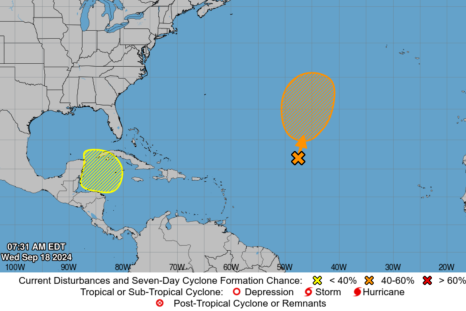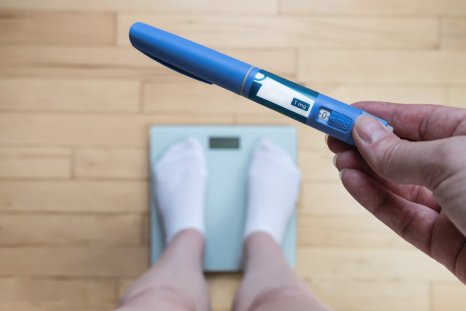The Kilauea Volcano in Hawaii has erupted again this week in a national park, prompting gas warnings from officials.
Kilauea erupted briefly Sunday night in a section of Hawaii Volcanoes National Park that remains off-limits to the public. The eruption in the volcano's middle East Rift Zone resumed Monday night, according to the U.S. Geological Survey's Hawaiian Volcano Observatory.
As of Tuesday, eruptive activity increased, but officials said that there was no immediate threat to homes or infrastructure nearby.
"Kīlauea volcano is erupting in Hawai'i Volcanoes National Park from a new fissure vent that opened within Nāpau Crater this morning between 4:00 and 5:00 AM HST. Current eruptive activity began with a small eruption that occurred on the evening September 15 from a fissure located just west of Nāpau Crater and lasted a few hours. A second phase of the eruption began at approximately 6:00 PM last night," the U.S. Geological Survey's Hawaiian Volcano Observatory said in an update on Tuesday.
In a warning, the U.S. Geological Survey's Hawaiian Volcano Observatory said that volcanic gas, known as "vog" could travel to other portions of the park due to wind. "Residents of nearby subdivisions may experience volcanic gas emissions related to this activity which may increase and decrease over the coming hours and days," the observatory said.
"High level of volcanic gas—primarily water vapor (H2O), and sulfur dioxide (SO2)—are emitted during eruptions and can have far-reaching effects downwind. As SO2 is released from lava, it reacts in the atmosphere to create the visible haze known as vog (volcanic smog) that has been observed downwind of eruptive vents," the observatory said. "Vog creates the potential for airborne health hazards to residents and visitors, damages agricultural crops and other plants, and affects livestock."
The park is home to the summits of two of the world's most active volcanoes: Kilauea and Mauna Loa. However, park officials say the eruption's remote location, more than six miles (10 kilometers) from the nearest road, makes public viewing impossible.
Geologists conducting a helicopter overflight Tuesday morning reported observing eruptive fissures spewing lava and active flows spreading across the floor of Napau Crater.
"The Volcano Alert Level/Aviation Color Code remains at WATCH/ORANGE. No changes have been detected in the lower East Rift Zone or Southwest Rift Zone," the observatory said in the update. "The Hawaiian Volcano Observatory (HVO) is watching the situation closely and additional messages will be issued as needed. HVO will continue to provide daily updates for Kīlauea volcano. Should volcanic activity change significantly, a Volcanic Activity Notice will be issued."
This article includes reporting from the Associated Press.
Disclaimer: The copyright of this article belongs to the original author. Reposting this article is solely for the purpose of information dissemination and does not constitute any investment advice. If there is any infringement, please contact us immediately. We will make corrections or deletions as necessary. Thank you.



